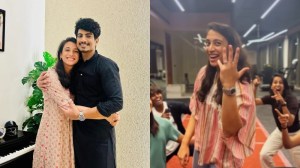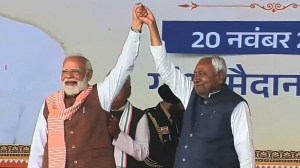Iraq problem: Devising a govt for all
From his suite at the Ritz-Carlton overlooking Georgetown, Sharif Ali bin Hussein spoke passionately last week about bringing the royal fami...

From his suite at the Ritz-Carlton overlooking Georgetown, Sharif Ali bin Hussein spoke passionately last week about bringing the royal family back to Iraq — and putting himself on the throne. ‘‘Our belief after 40 years of failed republics is that the people want a return of the monarchy. This is what we’re being told by Iraqis themselves,’’ said the dapper chief of Iraq’s Constitutional Monarchy Movement, who fled the capital, Baghdad, after his cousin King Faisal II was assassinated in 1958.
In Ritz-Carlton at Pentagon City, Iraqi Kurdish leader Jalal Talabani opined about a new Iraq that is democratic and parliamentary — and provides ‘‘more than autonomy’’ for the Kurds. As the US begins plotting the country’s future after the anticipated fall of President Saddam Hussein, the biggest challenge might be designing and sustaining a government suited to Iraqi society.
Such a government has never existed in modern Iraq, a nation with artificial borders delineated by colonial masters. And, despite the new show of unity during talks with the Bush administration this week, Iraq’s widely diverse opposition still has widely diverse visions of the future.
‘‘A military operation in Iraq will be comparatively easy. The hard part will be constructing a truly representative system afterward. It will take long-term US hand-holding to keep Iraqis focused on the prize,’’ said Henri J. Barkey, a former Iraq expert in the US State Department who is chairman of Lehigh University’s international relations department. ‘‘This is not your dad’s Germany or Japan,’’ he said. ‘‘It’ll be much harder to politically rebuild Iraq.’’
Yet the Bush administration now holds out hope that the opposition can be crafted into a viable force — and a potential weapon against Hussein. US officials who criticized the opposition for its squabbling, and accounting, were almost giddy with enthusiasm last week after a session with opposition leaders. ‘‘It’s a turning point, absolutely,’’ said a senior administration official who requested anonymity. ‘‘Certainly those of us sitting in the room were all impressed with the dynamic of coordination and consultation among the six groups.’’ (LATWP)



- 01
- 02
- 03
- 04
- 05




























